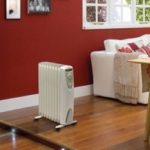About features of the device of oil heaters
This type of heaters is used to heat various rooms: both living rooms and industrial warehouses, offices. They are mobile, can work for a long time without interruption, are silent, safe. Oil Type Radiators they are in the form of flat or made in the form of some kind of harmonica consisting of metal sections welded to each other. Knowing the device of the oil heater, you can choose the most suitable model for your home.
Content
Device design
The body of these heaters is made of metal and consists of hermetically sealed sections. On top of them put special durable powder coatingnot subject to mechanical stress.Inside the structure is mineral oil. Connect to the device:
- Thermostat.
- Heating element (TEH).
- Wires.
- Heating controller
- Special overhead panels.
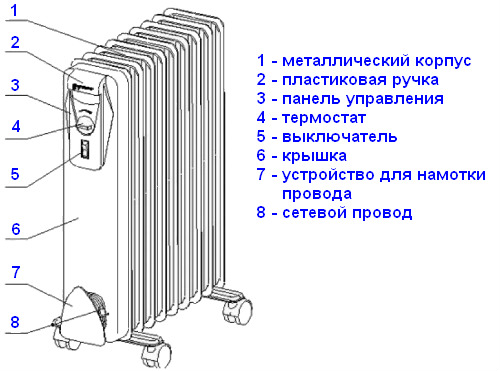
Operating principle
When the device is turned on, the heating element is first heated, then its thermal energy is transferred to the coolant (oil). When this occurs, the housing is heated. The cold air adjoining to it warms up from its hot surfaces, which, heating up, rises upwards. Convector principle of operation of the oil heater is that the jets of cold and hot air are mixed more intense. And some models are equipped with fans. Such heating devices warm the room much faster.
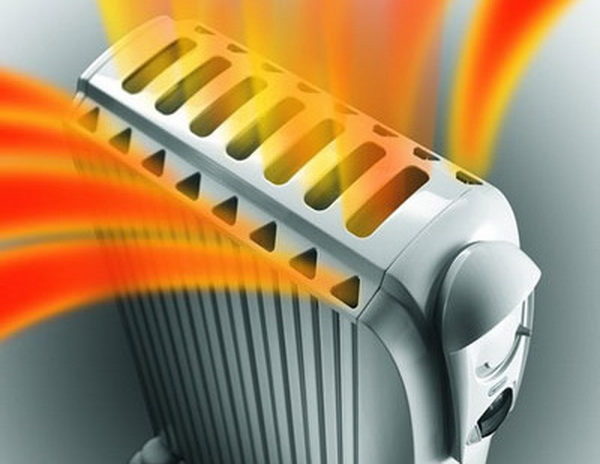
These heating devices are produced with different power and with different number of hermetic sections. The greater the number of sections, the greater the heating area, which means that the room can heat up faster. The disadvantage of increasing the number of sections is that such a heater will take up more space, and its weight will also increase.Although it can not greatly affect its mobility, since all models of such radiators are equipped with special wheels for ease of movement.
On the control panel of oil convectors there are switches of operating modes. Some modern models of radiators have LCD monitors., On which all necessary information is displayed.
Advantages and disadvantages
These devices are completely safe. They have no open heating elements and therefore random fires are virtually zero. Such heaters were invented for a long time and the principle of action, as well as their design has not changed. But in modern models there are many functional additions, for example:
- The temperature regulators allowing to carry out smoothly transition to the different modes of heating.
- Sensors disable the device when it overheats.
- Light indicators.
- Switches of modes of operation to install the necessary power, in order to save.
- Timers on-off device at a certain time.
- Embedded air humidifiers.
- Built-in fans to increase the speed of heating the room.
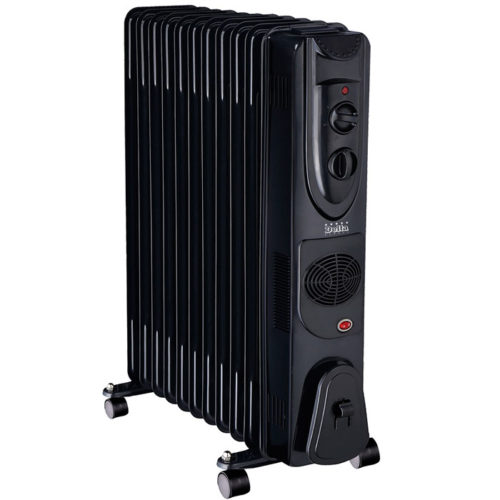
Oil radiator devices are durable in operation and can work up to three days without shutdown.
Their disadvantages (which are easily transformed into advantages) include:
- The whole room heats up for a long time, but with the built-in fan, the heating process increases many times, and the room heats up much faster.
- They have a rather heavy weight, but they have good mobility due to the presence of special wheels for movement.
Varieties of models
Often their appearance and design depend on the location, namely there are:
- Floor radiators (the most popular and functional).
- Wall mounted with flat surfaces (differ in profitability in terms of electricity consumption).
- Desktop low-power devices (having a fairly low heat transfer).
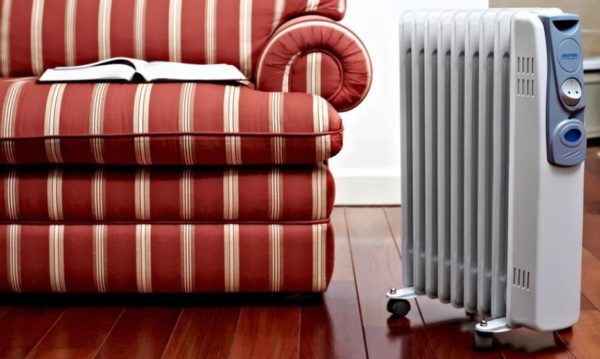
There are models of radiators with the effect of the fireplace. They are silently and quickly enough can warm the room. This happens because thrust rods are installed on their two sides, so that heated air can circulate much faster.
In new models of oil heaters are built timer program blocks, making it possible to install the switch on and warm the room to the specified time.They are usually equipped with a remote control and an emergency sensor that reacts to the fall of the device (the device turns off).
Everyone knows that it is not recommended to dry clothes on radiators, as this causes overheating of the device. But some of their models have special removable frameswhich are intended for drying clothes without causing damage to the device.
It is not recommended to use conventional heaters for heating bathrooms or wet rooms. For this special issue is now released plinth oil heaters, representing in form a narrow panel, fastened to the baseboard and takes up little space. Such devices are quite safe, they can be installed even in wet rooms.
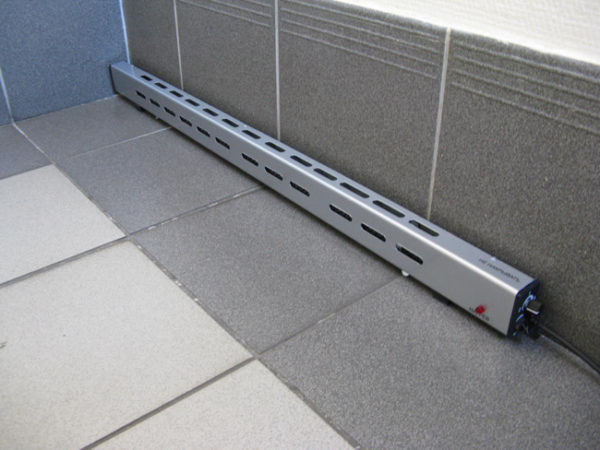
We found out that oil heating devices are an imitation of the radiator of the central heating system. For the most part, they do not need special installation and operate from 220 V mains. Their design represents a hollow shape filled with mineral oil, in which the heating element is located. They are safe and relatively inexpensive.
What to look for when choosing a device
When buying such heating devices, you need to take into account a number of points:
- The power of the device and the area that it is able to heat.
- The quality of the insulation of the premises.
- The number of door and window openings.
- Availability of additional functions necessary in each specific case (timer, fan, clothes dryer, control panel, etc.).
Recommendations for the care of oil heaters
Care of them is quite simple, and if you follow these recommendations, the devices will last a very long time:
- Their surface can not be cleaned with abrasives.
- Wipe the devices on top with a dry soft cloth (in the off and cooled state).
- Do not dry the laundry on the radiator itself so as not to cause it to overheat (use only frames designed for this purpose for this).
- Do not put the power cord on the hot surface of the device (for this, most models have special recesses for storing them).
- Monitor the vertical position of the device.
- Position these appliances away from easily fusible products.
Knowing how a domestic oil heater works, the characteristics of its work, given such nuances as the power of the appliance that corresponds to the area of the heated room, you can always choose the most suitable model for your home. It is only necessary to remember that the cost of the device will directly depend on the number of additional functions.

/rating_off.png)






